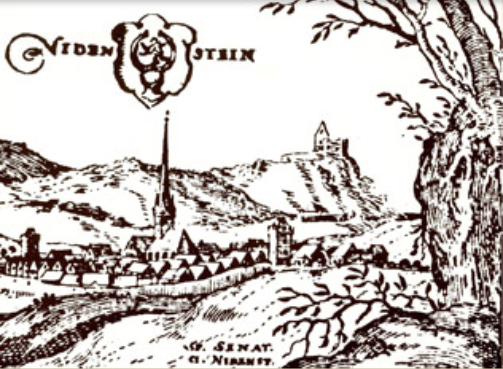In 1935, youngest child Helen married Frederick Roth Orsato, son of Frederick and May Orsato.
On April 13, 1940, the census finds widowed Conrad living with his son Charles, Charles’ wife Barbara and their 3 children in the family home. It notes that they had been living there in 1935, also. The house is being rented by Charles, with a value stated as $25. He must be renting from his father. Conrad is now 70 years old, still a polisher at a bronze company and was working the week of March 24-30th. He had worked for the whole year in 1939 with an income of $1300. There were supplemental questions in this census, but no one in the family were on the lines associated with them.
At some time in the mid 1940’s, Conrad became a night watchman at the William H. Jackson factory where he had worked as a polisher. My father remembers staying with the family while on leave from the Merchant Marines during WW II, and getting up in the morning to find Conrad sitting at the table with a drink (I think it may have been a boilermaker) after coming home from the night shift at the factory, while the rest of the family ate breakfast. I remember sitting in his lap as a little girl in the front upstairs room on Crystal Street. I have a great picture of us with my siblings.
Conrad Knatz died at his home on June 30, 1957, just shy of his 89th birthday. He died, apparently, of natural causes. Conrad was buried on July 3rd, in the family plot at Lutheran Cemetery, joining his wife Anna, 3 of their children, and his parents. Their footstone says “ANNA- CONRAD”.
Charles Conrad, the second child of Conrad and Anna Eberhardt Knatz was born on February 24, 1893 in New York City. He was baptized on April 23, 1893 at the Mission Church of the Holy Cross, his family church. According to the actual certificate, his name is Charles Conrad, even though the record book of the church has Charles William written down. His sponsors were Lizzie Friess and Charles Knatz, possibly his father’s brother.
We first see Charles in census records on June 5, 1900. He is 7 years old and living at 536 East 16 Street. He and sister Christina, age 5 are attending school. Younger children Laura 3, Philip 1 and Henry 1 month old complete the family. His father Conrad is a brass polisher and his mother Anna is a housewife. His uncles Jacob and Charles Knatz also lived in the building along with his cousins. His grandmother also lived nearby. The census says that Conrad and Anna had 5 children, 5 were alive. But sister Anna Appolonia who was born in 1891 and died 4 years later, is not accounted for.
On June 1, 1905, the family is now living at 638 East 16 Street and in this same building is his future wife Barbara Urig and her family. Family stories said they lived on the same block, but 1905 finds them actually at the same address. His father is listed as a polisher, once again and he at 12, and all his siblings, aged 6-11 are in school. Barbara, at 12, is also at school, probably the same school as Charles.
On February 24, 1907, Charles was confirmed, as per his Common book of Prayer, given to him by Frederick Steenstra. I have this book.
According to family stories, Charles and Barbara were confirmed on the same day and gave each other handkerchiefs as gifts.
On April 19, 1910, the family is still at 638 East 16th Street. The Urigs have moved out following the death of Barbara’s mother and sister. Conrad and Anna have been married for 20 years, had 10 children and 7 are still alive. The seven children are still at home. Charles, the eldest, at 17 years, is working as a collector in real estate. His Uncle August is also in real estate and may have found a job for him. Charles’ 15 year old sister Christina is working and the rest of the children are still in school except for new additions, George age 3 and Helen age 11 months.
On May 6, 1912 On Charles enlisted in Company D of the Corps of Engineers in New York City when he was 19 years old. He was a 1st Class Private and had duties as a clerk. He saw no “battle, engagements, skirmishes or expeditions” and received no wounds. He was an Armory Marksman in 1914 and 1915. He was honorably discharged on June 1, 1915 when his 3 years were up. As per his discharge papers, he was 5’, 4 ½” and had blue eyes and light brown hair. His character was noted to be “Very Good” as per his Commanding officer of Co D. His service was “Honest and Faithful”. I have his Field Manual, which was published in 1907 and is an interesting read.
